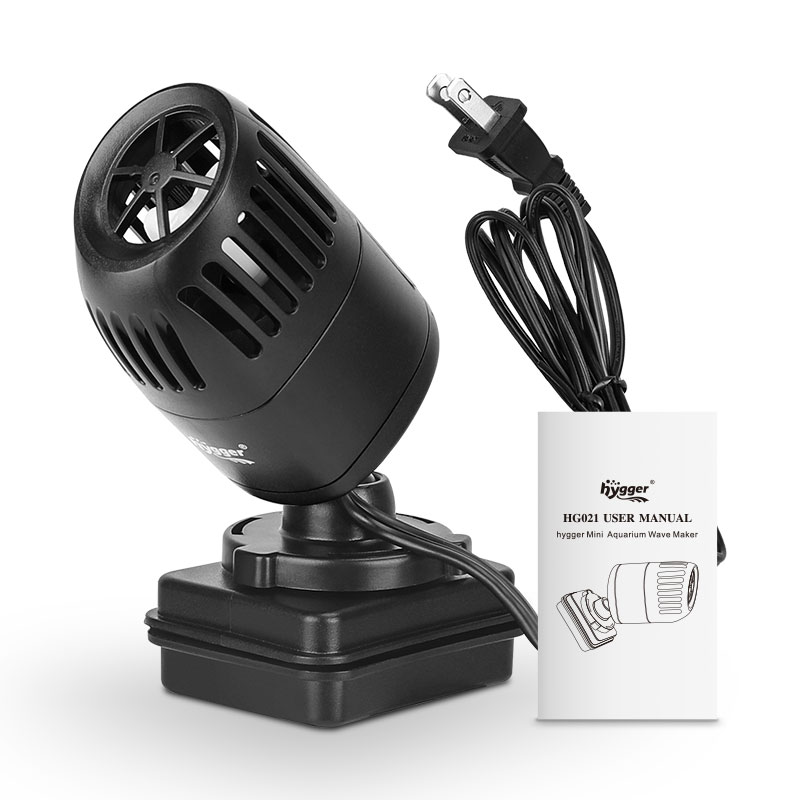What is the Rarest Fish You Have in Fish Tank
There are more than 3 trillion fish present around the globe. Some species are in the millions, and some are fighting for survival for many reasons. This article mainly addresses about rare fish species. You will learn about the rarest fish in the world. Moreover, the rare aquarium species are also in the scope of this article.
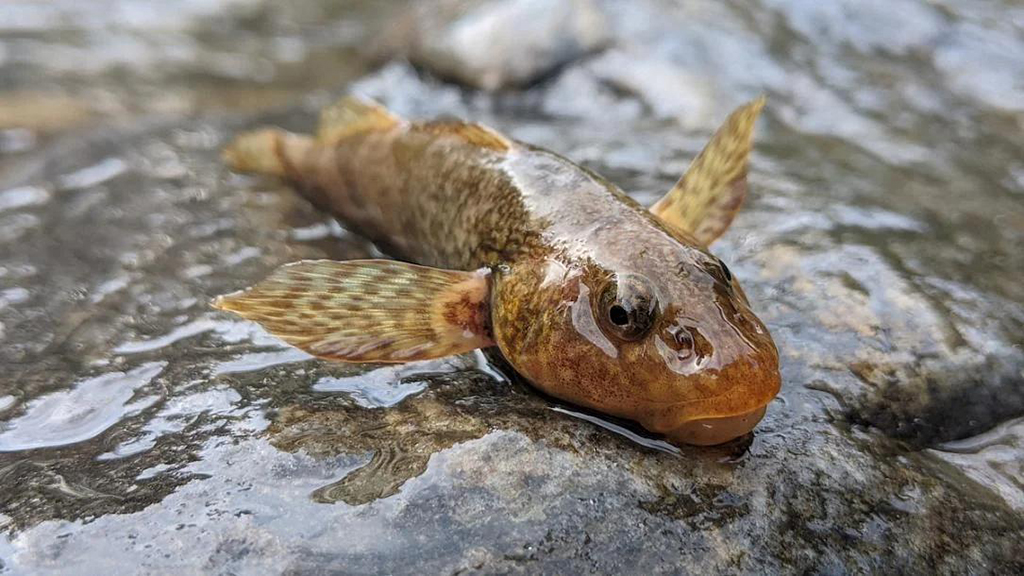
What Is the Rarest Fish?
The Devil Hole pupfish is the rarest fish in the world. These small fish are present in Nevada states. A deep limestone cave in Death Valley National Park is their home. They feed on algae and small invertebrates. However, they are gearing up for the population. Researchers reported that their population has been high for the last 19 years, i.e., 263 pupfish.
Their average size is 23 mm. Coloration varies, i.e., males are bright blue, and females and juveniles tend to be yellow. They reproduce throughout the year, but there is a spike during fall and spring. Their average age is 10 to 14 months.
Rarest Fish in the World
Here is a list of the rarest fish species in the world, except the Devils Hole pupfish, around the world.
Red Handfish
| The red handfish is a small and slow-moving that modifies its fins to turn into a human hand shape. This mostly red-colored fish is present around sandy and rocky bottoms of the South Tasmania NRM region. There are less than 3000 individuals in the wild. Institute for Marine and Antarctic Studies Tasmania found a cluster of 21 eggs. Now, they are raising them in their tanks. | 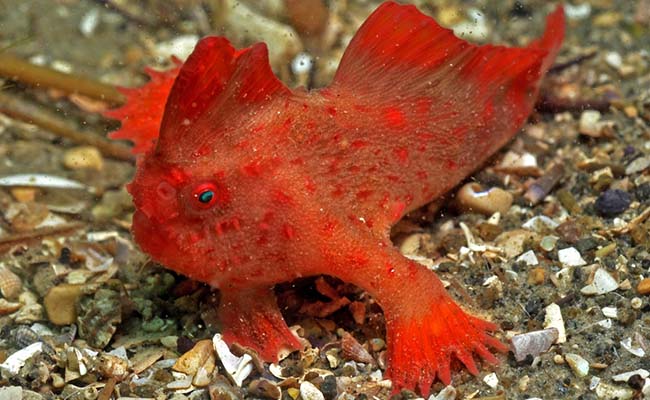 |
Tequila Splitfin
| This is a small freshwater fish. They are not named after the drink but against a nearby volcano. They have clear, unpaired fins. These dark olivaceous fish are present in freshwaters of the Mexican federal state of Jalisco. Currently, their population is exponentially growing. As per the 2022 report, there are about 10,000 individuals. | 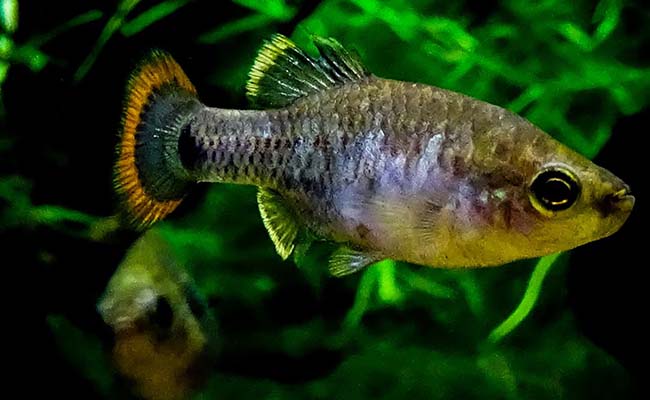 |
Adriatic Sturgeon
| Adriatic sturgeon is a large fish that is present in the Adriatic Sea. Moreover, they are also present in long rivers of different regions, i.e., Slovenia, Greece, Montenegro, Italy, Croatia, and Albania. They are darker black with five rows of scutes. Over the last three generations, these large-mouth fish have been declining at an 80% rate. There are about 1,300 sturgeon remaining in California. While 800 mature individuals are reported in the European region. | 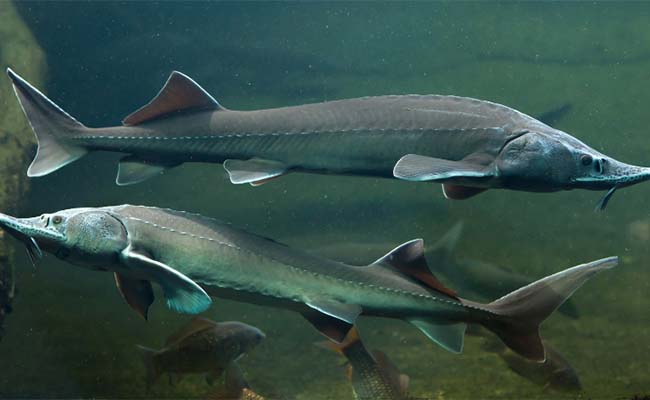 |
Kissing Loach
| It’s a ray-finned species that belongs to the Botiidae family. They have deep dark brown dorsal with light brown strips. They have pointed compressed heads with the bearable underside of the head. This freshwater species is native to Japanese rivers, i.e., Okayama and the Lake Biwa-River Yodo system, Kyouto. There are about 800 individuals from this species present in the world. | 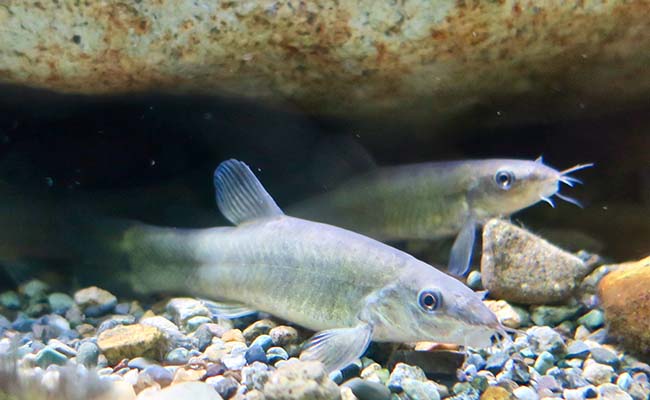 |
Ornate Sleeper Ray
| This disk-shaped fish comes with a dark brown ring surface with yellow dots. Two disks on the back shoot an 8 to 220-volt current to keep the predators away from themselves. These two dorsal fins fish are native to the KwaZulu-Natal coast of South Africa and the Eastern Cape. Their exact population is unknown. | 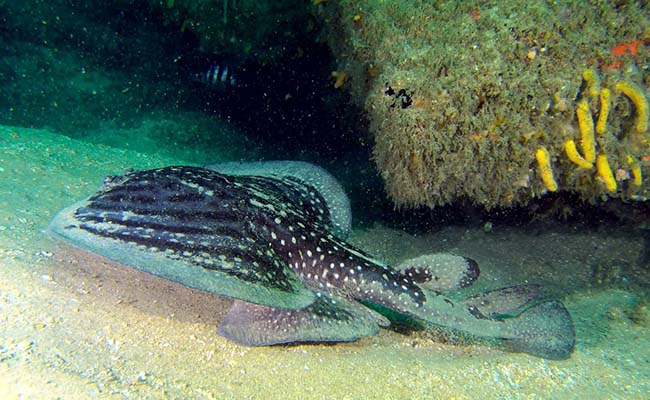 |
Smalltooth Sawfish
| These smalltooth sawfish appear in saw shape with grey to brown top and white underside coloration. A flat head and trunk give them a unique shape. They are present in estuaries and the tropical Atlantic Ocean. Their population is between 200 to 5,000 adults. | 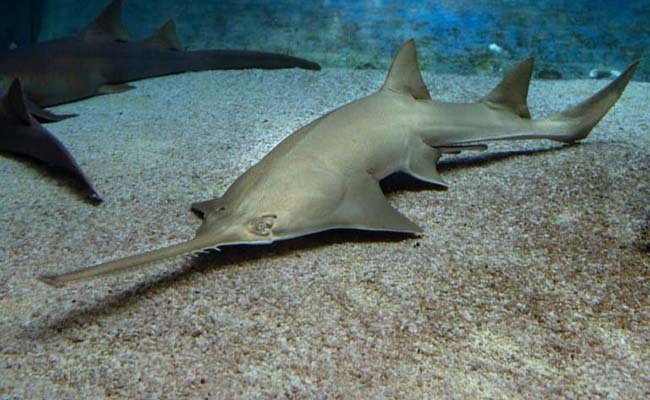 |
Giant Sea Bass
| Giant sea bass is another endangered fish species, according to IUCN. The coloration varies throughout the life, i.e., a juvenile of bright orange color turns into a black mature fish. Their size and weight make them unique, i.e., 7 feet with 700 pounds. They are present from Northern California to Oaxaca, Southwestern Mexico. There are less than 500 breeding individuals there. | 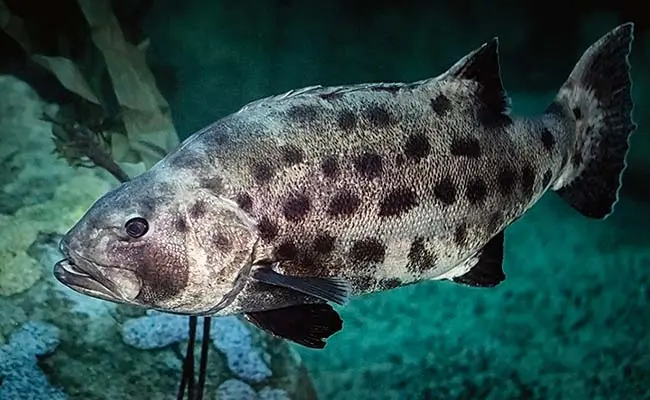 |
The Rarest Fish for Aquariums
Aquarists love to keep rare species in their tank. Mostly, these rare species are unique, sometimes colorful, and require big bucks. Here are some of the rarest fish species to keep in your aquarium.
Platinum Arowana
| Asian Arowana and Dragon Fish are the other common names of this world’s most expensive fish. Their average aquarium life is 20 years. | 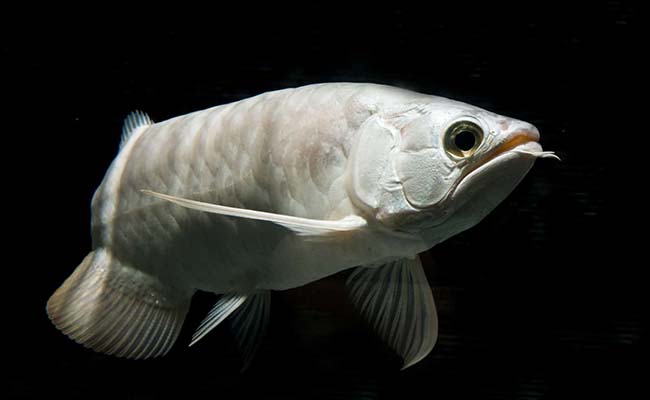 |
| Diet: It’s a predatory fish and loves to feast on the meat of shrimps and crickets. You can also feed them on worms, small frogs, and crab meat. |
|
| Growth: They can grow up to 3 feet long in the wild. They show aggressive behavior, especially in adulthood. |
Habitat
They are native to Asian regions, i.e., Indonesia, Myanmar, and the Philippines. However, they also exist in Australia and South America, i.e., Brazil and Colombia. They live in swamps, slow-moving rivers, and flooded forests.
Characteristics
| Large and wide mouth | Whisker like barbles | Multiple colors, i.e., red, green, and gold |
| Numerous teeth | Enormous scales like a dragon |
Freshwater Polka Dot Stingray
| Freshwater polka dot stringy is another rare fish to keep in your aquarium. They have a small population. Therefore, there is a ban on its export from Brazil. With proper care, they have an average of 15 years. | 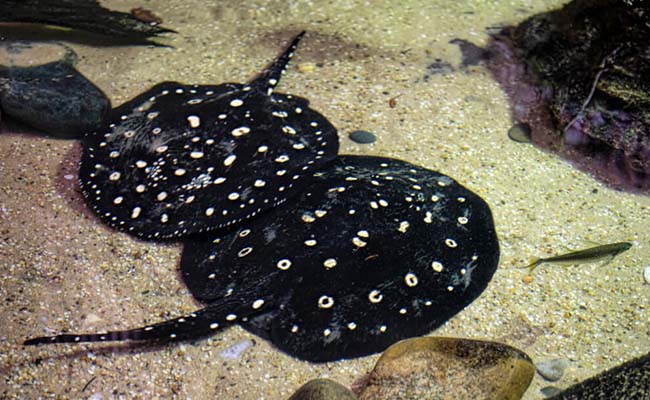 |
| Diet: These freshwater fish feast on fish and other aquatic invertebrates. Snails and crabs are also their favorite diet. |
|
| Growth: They can grow up to 2 feet in length and 1 to 1.25 feet in width. |
Habitat
This unique disc-shaped fish is native to the Xingu River basin of Brazil. They mostly live in sand banks and slow-moving waters with sandy substrate.
Characteristics
| Carnivores | Moving by flapping their wings | Females have larger bodies than males |
| Venomous | Sleep on the sand |
Temperament
They cause more human deaths than any other species in the Amazon. However, they are docile.
Clarion Angelfish
| It’s another rare aquarium species. They are vulnerable due to shallow water habitat, declination in population, and restricted distribution. El Nino and La Nina events are also responsible for that. They usually live about 10 to 12 years. | 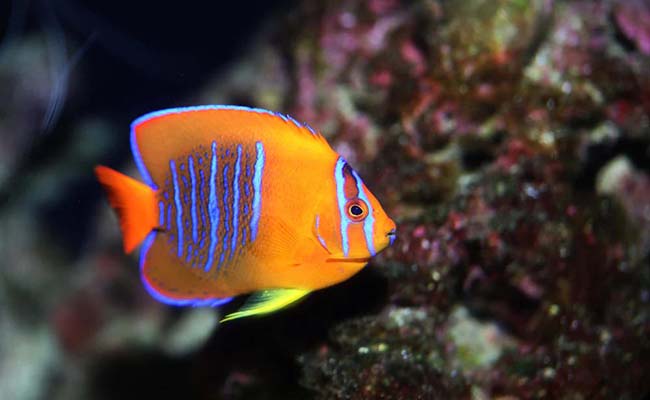 |
| Diet: They eat multiple foods. It includes tunicates, sponges, small invertebrates, parasites, dead skin of large fish, and algae. |
|
| Growth: They can grow up to 20 cm in length. |
Habitat
They usually live around rock reefs and walls in the Revillagigedo Islands of the Pacific Ocean. Their major distribution is in Isla Clarion.
Characteristics
| They come in brownish-orange to vibrant-orange colors | They have a compressed body |
| Contain poison, i.e., ciguatera | Curious and brave |
Temperament
They are hardy and don’t migrate, usually live solitarily, and show a little aggression.
Zebra pleco
| These Zebra mimicking fish are another rare aquarium-suitable fish. They are becoming rare due to overfishing and habitat loss. The flow is reducing in their habitat, i.e., Xingu River, due to the Monte dam. Reaching maturity from the egg takes time. They can live up to 10 years. | 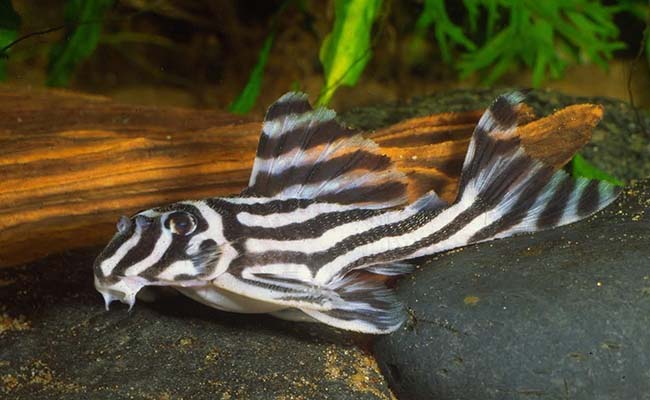 |
| Diet: They are carnivores. Their diet includes cucumber slices, shrimps, bloodworms, carnivore pellets, earthworm sticks, and frozen food. They also eat cockle, mussels, and shredded prawns. |
|
| Growth: They gain a maximum 2.5 to 3 inch size at the age of 3 years. |
Habitat
They are present at 1 to 3-meter depth in Xingu River, Brazil. They prefer to live near the rocks with sponges that have grazing life forms.
Characteristics
| They have black and white strips, mimicking Zebras. | The color remains visible throughout life, i.e., from the juvenile to the adult stage | They have small mouths |
Temperament
They are nocturnal and shy. They are peaceful and can live with other fish. However, they also show territorial behavior.
Peppermint Angelfish
| They are rare because it’s hard to reach their deep habitat. With proper care, they can live up to 20 years. | 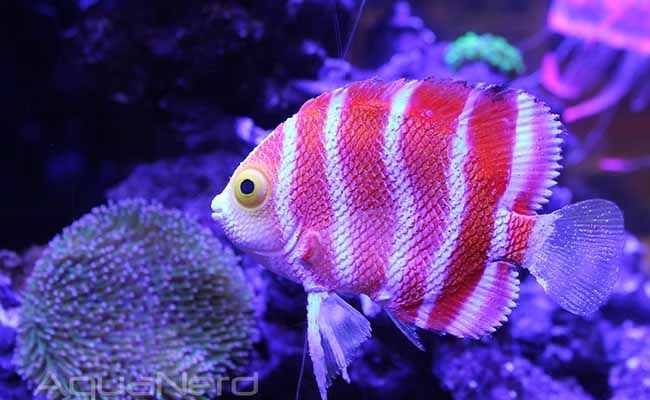 |
| Diet: Their diet consists of various foods, i.e., tunicates, detritus, crustaceans, worms, sponges, algae, and frozen food. |
|
| Growth: They can grow up to 3 inches in length. |
Habitat
They present at about 400 feet depth in the ocean on coral rubble, caves, cracks, and overhangs on steep slopes of coral reefs.
Characteristics
| Deep, oval-shaped bodies | There are 5 verticle white bands on a reddish-orange backdrop | They lay eggs |
Temperament
They have territorial behavior and nip the fin of other fish. Therefore, they are not suitable to keep with other fish.
Imperial flower loach
| They are not suitable to keep with other fish due to their territorial behavior and fin nipping. It has about 20 years of average life span. | 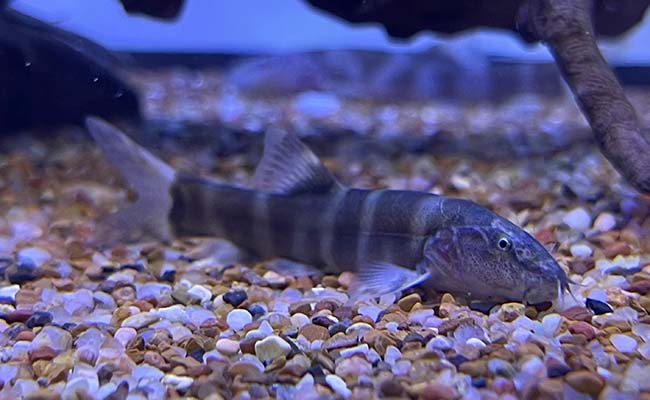 |
| Diet: They are omnivorous. You can feed them on multiple foods, i.e., mysis shrimps, sinking flake food, mysis shrimp, bloodworms, brine shrimps, and vegetation. |
|
| Growth: They have 1.6 feet mature length. |
Habitat
They are native to the upper and middle of the Yangtze Basin, China. They are present in flowing, clear, and well-oxygenated environments.
Characteristics
| They have small, pointed mouths | There are yellow and black rose rosettes on the golden background |
Temperament
They are ambush predators and move to and fro while bottom exploring. They use their barbels to find their prey.
Masked Angelfish
| Their distribution makes them rare as they are only present in one place around the globe, i.e., Hawaii islands. They live about 6 years. | 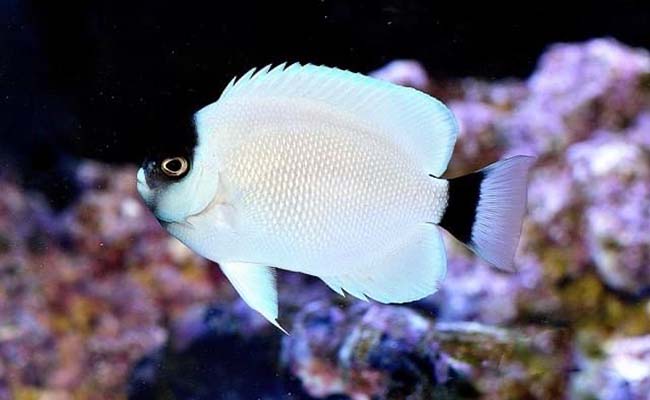 |
| Diet: Their diet includes green algae, fish eggs, and planktonic organisms. |
|
| Growth: They can grow up to 21 cm. |
Habitat
They prefer to live in the cooler water of the Northwestern Hawaii Islands. They usually live over rocky reefs up to 60 meters depth.
Characteristics
| They are protogynous hermaphrodites, i.e., change gender from female to male at reaching 6 to 7 inches in length | Females are white with black masks around the eyes and back base on the tail | Males have bright yellow pelvic fins and dorsal |
Temperament
They are bottom dweller and have territorial behavior.
Zebra shovelnose catfish
| Their higher price tag makes them rare in aquarium setups. They can live up to 10 years. | 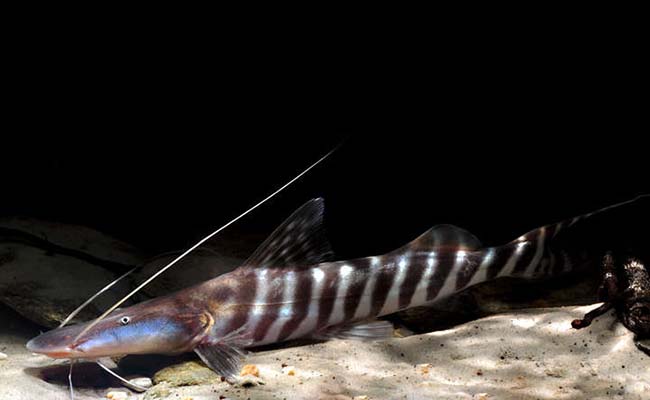 |
| Diet: They are carnivores and eat meaty food, i.e., smaller fish. They also feast on dead shrimps, squid, mussels, and strips of larger white fish. |
|
| Growth: They can grow up to 2 to 3 feet long. |
Habitat
They are native to Brazil, Colombia, and Peru, and are present around the upper Amazon, i.e., Putumayo, Madeira, Caqueta, Ucayali, and Maranon. They live in white water with a high proportion of dissolved solids and higher oxygen concentrations or live in high-flowing rivers.
Temperament
They are peaceful but bully small and peaceful fish.
Final Thoughts
The Devil Hole pupfish is the rarest fish. With it, many other species are in IUCN’s red list, i.e., red handfish, kissing loach, etc. There are some rare fish to keep in the aquarium. Their small distribution, pollution, environmental changes, and many other aspects make them rare. Give them home-like conditions and feed them on their favorite meal to enjoy their rare colors.


